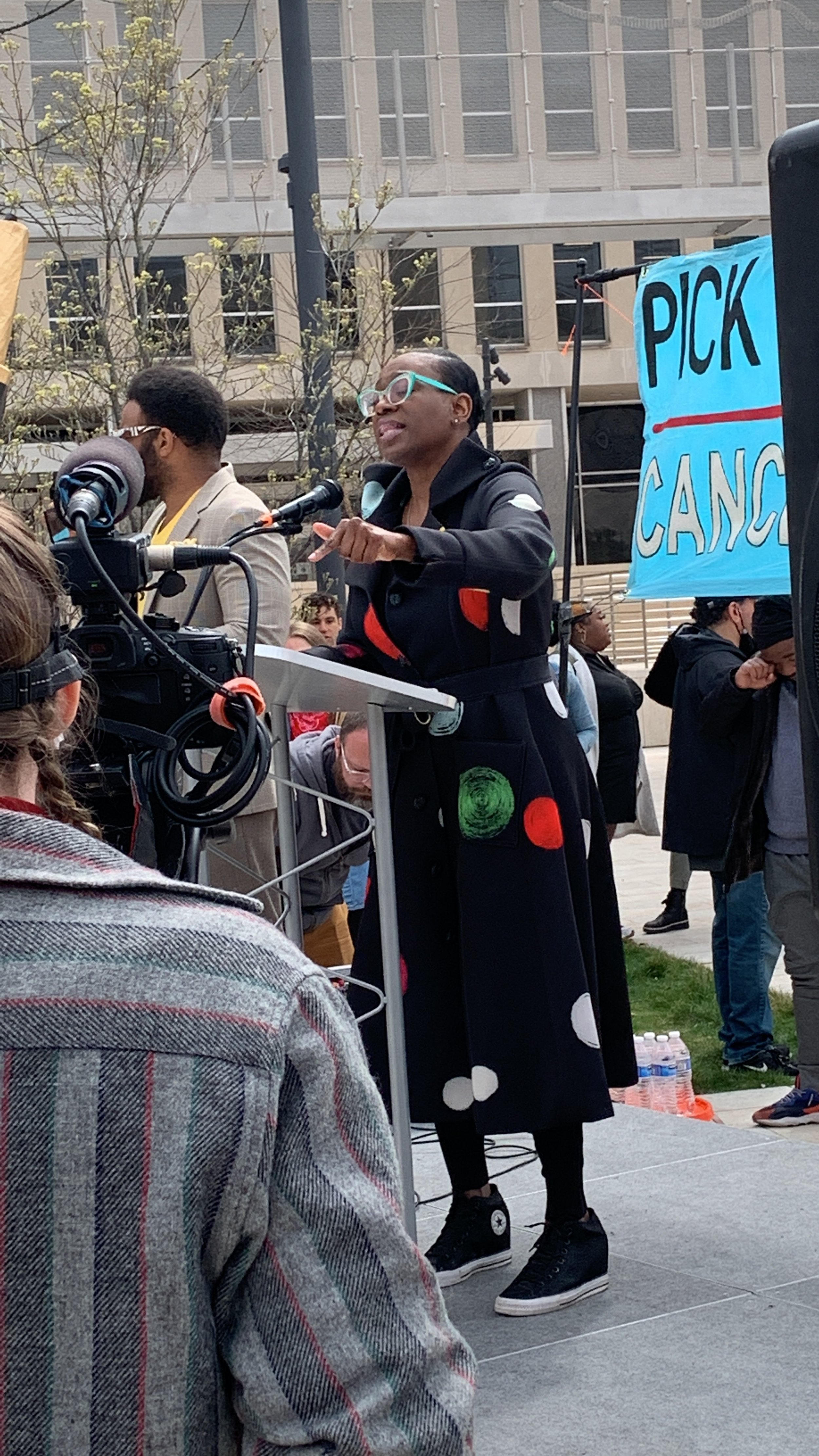What to Know and Where to Go: Education Loan Cancellation in Ohio
Ohioans of all races, incomes and backgrounds should be able to go as far as our dreams and abilities take them. The value of education and training after high school is clear. People with postsecondary certificates, credentials or degrees are better positioned in the job market, and those with college degrees are paid more on average over their lifetimes. Having a college degree also helps people secure quality jobs, a healthier life, and the chance to provide a better life for themselves and their loved ones. For many Black, brown, and economically disadvantaged people, postsecondary education creates opportunities that can help propel them out of poverty.
But the price to obtain that education can be prohibitively high for some. Recent College Board data reveal that the total cost of attending both public and private four-year intuitions has tripled since 1980. More than 45 million borrowers in the U.S. now owe more than $1.7 trillion. Middle- and low-income Americans bear the greatest burden of education loan debt, making it harder for them to make the high monthly payments and limiting their ability to buy homes, save for retirement or start businesses.
EDUCATION LOAN DEBT IN OHIO
Collectively, some 1.7 million Ohioans – about 15% of the state’s population – owe more than $62 billion on their federal education loans. This ranks Ohio second in the nation in terms of the percentage of residents who have outstanding education loans. On average, they owe nearly $35,000 each.
OCTOBER - Application Launch
Once the application is submitted, borrowers can expect relief between 4-6 weeks.
NOVEMBER 15, 2022
Borrowers are encouraged to apply by this time to receive relief before the end of the loan repayment pause in December.
DECEMBER 31, 2022
Student loan repayment pause ends. Borrowers are expected to start repayment in January 2023.
DECEMBER 31, 2023
Final deadline for student loan forgiveness applications.
Key Dates & Deadlines
Latest Updates
BIDEN-HARRIS ADMINISTRATION STUDENT LOAN CANCELLATION PLAN
The plan announced by the Biden-Harris Administration in August to cancel education debt for millions of borrowers consists of three parts:
Targeted debt relief to low- and middle-income families
Pell Grant recipients with loans held by the Department of Education are eligible for cancellation of up to $20,000, while non-Pell recipients can get up to $10,000 cancelled if their income is less than $125,000, or $250,000 for households. The plan also expands the Public Student Loan Forgiveness program for people who work for federal, state, tribal or local governments, the military or qualifying nonprofits if the enroll before Nov. 1, 2022.
Final extension, to December 31, 2022, of the student loan repayment pause
Both the Trump and Biden Administrations paused student loan repayment during the COVID pandemic to provide Americans with some financial relief. The payment pause included a suspension of loan payments, a 0% interest rate, and stopped collections on defaulted loans. In August the Biden Administration announced that in addition to student debt cancellation that there would be another extension of the repayment pause but stated that this will be the last extension on the repayment pause that will last until December 31st, 2022. To find out which loans are eligible for the repayment pause please check here.
Changes that make the loan system more manageable for borrowers
Borrowers will be required to pay no more than 5% of their discretionary monthly income on income-driven repayment plans for undergraduate loans, a reduction from the current threshold of 10%. The plan changes the definition of non-discretionary income to allow wiggle room for people whose pay falls under the poverty threshold on their monthly payments, cancels balances of borrowers owing $12,000 or less after 10 years of payments, and covers borrowers’ unpaid monthly interest so their loan balances will not grow if they are making their monthly payments.
Sign Up for the Federal Education Loan Cancellation Program
To be notified when the application launches, visit www.ed.gov/subscriptions.
Find out if you are eligible for the federal education loan cancellation program
There have been recent changes by the DOE in which loans qualify under the cancellation program. Those with loans in default can also now utilize the new Fresh Start Program. To find out more information about your eligibility for loan cancellation is available here studentaid.gov/debt-relief-announcement/.
Get help with loan cancellation
College Now Greater Cleveland offers assistance with a focus on residents of Northeast Ohio. Fill out an online appointment request here or find the right numbers to call in Cleveland or Akron.








Impact on Black, brown, and low-income borrowers
The burden of student loan debt has harmed Black borrowers more than any other group. Not only do employers often pay Black people less than their white counterparts, but decades of predatory lending practices have also prevented many Black families from generating wealth through homeownership. As a result, Black students can have a harder time affording quality higher education and benefiting from the long-term economic mobility it provides. A recent study found that Black and Latinx families owe more in student loans but have less capacity to pay. Education loan debt is disproportionately a problem for Black and Latinx borrowers because of the amount of money they owe.
The education loan system further perpetuates the racial wealth gap in America because Black, brown, and lower-income individuals have a harder time paying back their loans. Black students often have to borrow more to cover the cost of tuition and other expenses, which causes them to have high rates of student loan debt compared to other groups. Nationally, Black college graduates owe an average of $25,000 more in loan debt than white college graduates. Four-year post-graduate data show that 48% of Black students owe 12.5% more than they borrowed. Black students are the most likely to struggle financially due to education loan debt, because around 29% of Black borrowers have to make monthly payments of $350 or more. This causes strain on Black families who tend to have lower incomes than their white peers due to years of policies and practices that blocked them from building wealth, excluded them from good jobs and undervalued their work.
Ohioans with middle and lower incomes are struggling coming out of the pandemic. Education loan cancellation will provide them with much needed relief. Twenty years after starting school, the median Black student borrower has $18,500 in loans remaining, while the median white borrower has $1,000 in loans according to a report released in 2019.
Based on recent census data, Ohio’s median household-income is $58, 116 — meaning the majority of residents will qualify for education loan cancellation under Biden’s plan. This could be particularly transformational for Black Ohioans. Hourly wages for Black residents are $5 less than those of their white counterparts. Higher education helps people secure better wages, but it can be out of reach when they are struggling to pay for basic needs like food or housing, let alone making a monthly payment on student loans.
Upon receiving degrees Black people on average have fewer job prospects and are paid less than their white peers. For many Black Ohioans the education loan cancellation is a step in the right direction toward increasing their overall wealth, but it is not enough. State and federal policymakers can cancel even more education debt. That would help repair years of policies that blocked Black and brown Americans from sharing in our nation’s prosperity and improve outcomes for all people regardless of what they look like or where they live.
Need Help navigating the cancellation process?
College Now Greater Cleveland offers assistance with a focus on residents of Northeast Ohio. Fill out an online appointment request here. Or find the right numbers to call in Cleveland or Akron.






